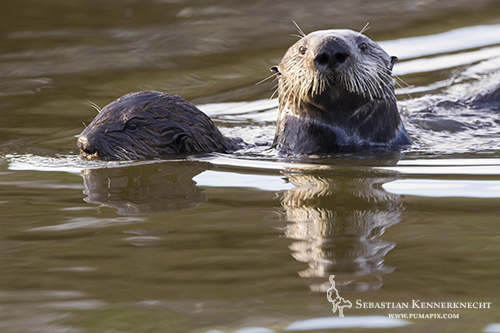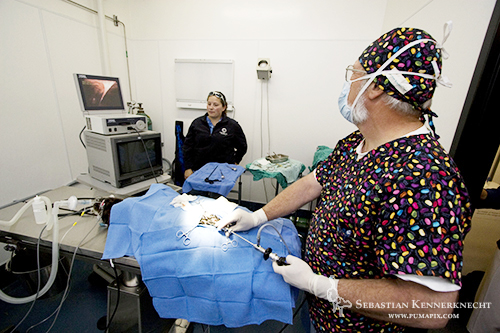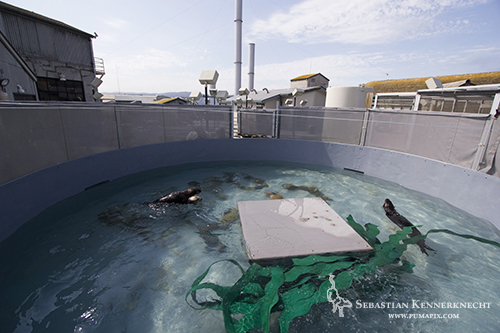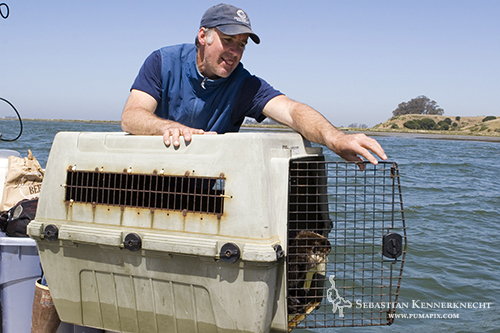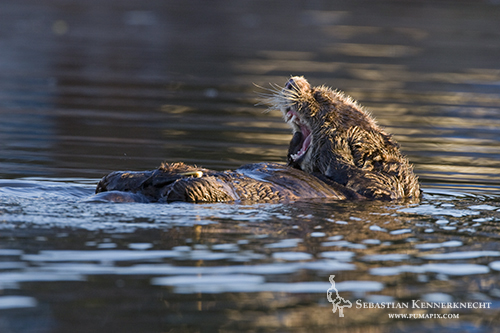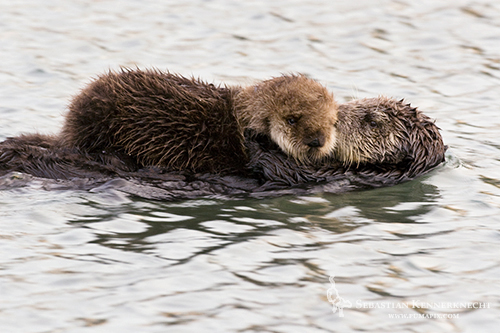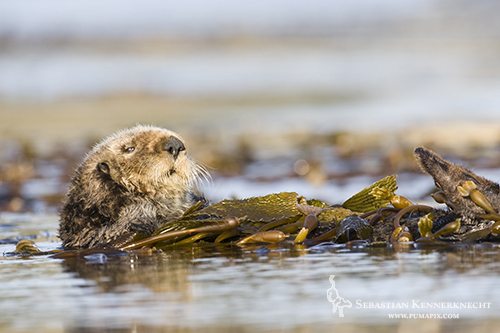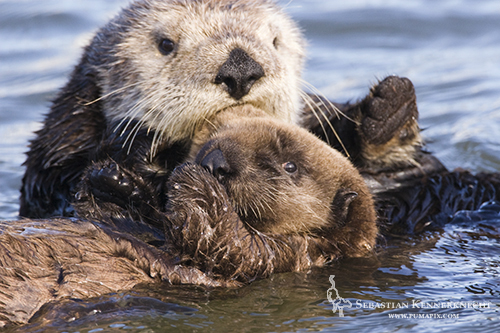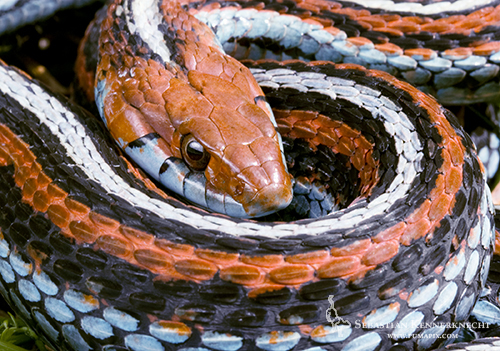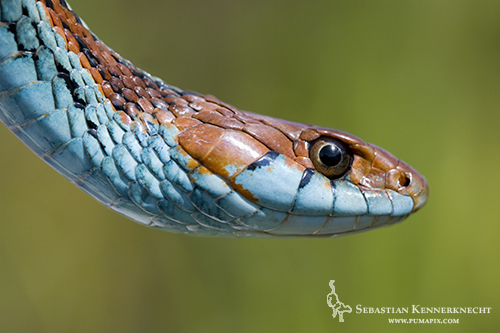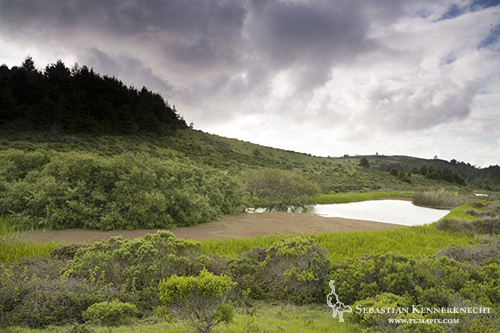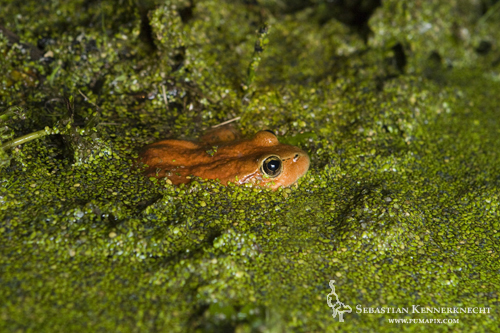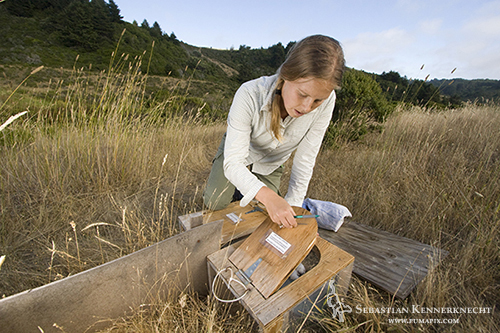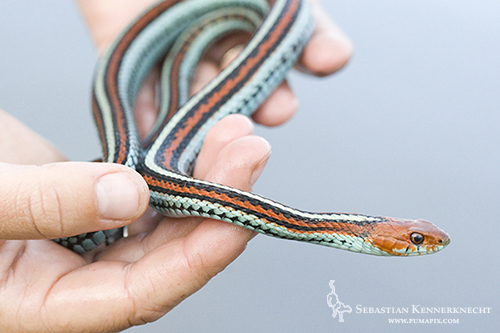Just wanted to cover another local endangered species, one also covered in the Endangered Neighbors exhibit. Sea Otters (Enhydra lutris) are probably the cutest animal I photographed for the exhibit yet that did not save them from man as their numbers are also one of the lowest in that group. At around 2650 (they do a census every year where they attempt to record every single Sea Otter along the California coast) their numbers are stable if not decreasing.
The first issue is a historical one since southern sea otters were almost driven to extinction due to the fur hunt in the late 1800s and early 1900s. Before this commercial eradication of these beautiful creatures there were an estimated 16,000 in California, by the time the fur hunt had done its damage only around 50 survived in Big Sur. When the species was listed as threatened under the endangered species act in 1977 there were an estimated 1,789 individuals. Since then major conservation efforts have and are taking place but as you can see the population is not making any kind of fast comeback.
The modern problems sea otters face include:
- Coastal pollution created pathogens and parasites negatively affect otter immune systems
- Getting entangled in fishing gear (especially gill nets)
- Getting shot (though rare this does still happen)
- Potential of a large scale wipe-out in case of an oil spill
As I mentioned before though, there are plenty of organizations and individuals putting in a lot of effort to protect this species. It probably helps that they are a keystone species (have a tremendous impact on the ecology of their coastal environment), are incredible cute, and can be seen from shore. The Monterey Bay Aquarium‘s SORAC program which rescues, treats, and releases injured otters; raises and releases stranded pups through their surrogate program; and conducts scientific research. They were also nice enough to invite me to photograph some of these efforts.
When a stranded otter is called in and brought into the aquarium it gets a medical check up and resident otters undergo surgery for transmitter implementation.
Their surrogate program is also quite amazing where certain female otters readily take on the role of mother when a stranded pup is brought to the aquarium. They raise them as if they were their own, providing them the life skills for them to be ready to be released back into the wild (the aquarium first had people try to teach the pups how to forage but it proved to not be as effective).
They subsequently monitor the released individuals daily for two weeks. If the individual decides to swim to far out into the ocean a helicopter is even hired so they can find the otter faster.
The great thing is that like for any other endangered species there are easy steps you can take to help these cuddly (they at least they look cuddly, though this really isn’t the case behaviorally) creatures out:
- Reduce or eliminate coastal pollution by:
- throwing your trash away at the beach
- throwing cat litter in the trash (not the toilet)
- dispose of hazardous waste appropriately – see Waste Management’s site on correct disposal of these materials
- buying organic foods, so pesticides don’t end up in the ocean
- using re-usable grocery bags
- Buy sustainably harvested seafood to reduce the chances of sea otters being killed as bycatch- check out the Monterey Bay Aquarium’s Seafood Watch program to see what areas are advisable to eat in your area
- Fixing oil leaks in your car immediately (just stand by some of the Mission Avenue gas stations in Santa Cruz and see how much oil goes into the gutter labeled ‘flows directly into the bay’)
- Vote against near shore oil drilling legistlation – to find out what they are, visit the Friends of Sea Otters website
You should also come out and see these amazing creatures. See how they wrap themselves in kelp during the night to keep from drifting. Check out a pup sleeping on its belly. Find an otter using a rock to open a clam. You will be amazing at their complexity and intricacies! You can also check out more pictures in my Sea Otter Portfolio.
*If you are interested in purchasing any of the pictures displayed in this post, please check out my fine prints page for pricing.*


